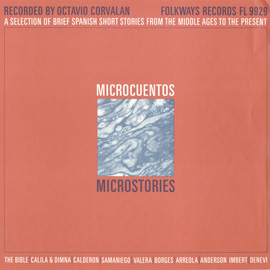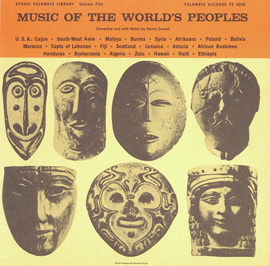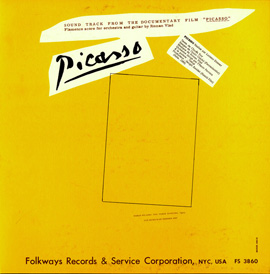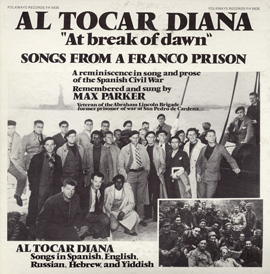Summary
These lessons are designed to introduce some of the history, traditions, and music of Spain. The first of the three lessons covers the flamenco dance and discusses the Romani (Gypsy) people. The second lesson is designed to teach students a fun Spanish children’s song. The third lesson introduces some of the Christmas traditions in Spain as well as a villancico (Spanish Christmas carol).

Suggested Grade Levels: 3–5
Country: Spain
Region: Southern Spain (Andalusia) and Northern Spain
Culture Group: Romani, Hispanic
Genres: Flamenco, Spanish folk song, villancico
Instruments: Body percussion (clapping, stomping), castanets, voice
Language: Spanish
Co-curricular Areas: Dance, social studies, drama
National Standards: 1, 2, 6, 7, 8, 9
Prerequisites: Intermediate level of understanding of solfege and notation
Teacher Considerations: Prior to teaching your students the songs presented in this lesson, learn them yourself. The two children’s songs presented in this lesson (“Mi Burro” and “Gatatumba”) are relatively simple in nature and should therefore be easy enough for any teacher to learn.
Objectives:
- Listen to, analyze, and describe the different styles of Spanish music
- Perform on castanet and body percussion along with the music
- Perform choreographed movements along with music
- Use new musical terminology associated with Spanish music: flamenco, palmadas, palmillo, etc.
- Sing a Spanish children’s song
- Accompany Spanish song with simple xylophone ostinato
- Use percussion instruments to illustrate Spanish text
- Use movements to illustrate Spanish text
- Notate a simple Spanish song using solfege and traditional notation
Material:
- “Flamenco Dance Song” from Spain: Flamenco Music of Andalusia
- “Mi Burro” from Children’s Songs from Spain
- “Gatatumba” from Villancicos: Spanish Christmas Carols for Children
- Map depicting regions of Spain (i.e. Andalusia)
- Castanets
- Image of flamingos
- Video of flamenco dancing (find one on YouTube that includes singing, dancing, and accompaniment, and limit viewing to no more than three minutes)
- Pictures for “Mi Burro,” or “My Donkey” (see last page)— a donkey, a black bonnet, and a pair of lilac-colored shoes (the images included in this lesson plan are public domain and were obtained via Microsoft Word in their clip art collection)
- Liner notes for full English translation of “Mi burro”
- Percussion instruments, both pitched (xylophones) and an array of non-pitched
- Recorders
- Liner notes for full English translation of “Gatatumba”
Lesson Segments:
- Flamenco (National Standard 2, 6, 7, 8, 9)
- My Donkey Has a Headache: Spanish Folk Songs (National Standard 2, 6, 7)
- Villancicos: Christmas in Spain (National Standard 1, 6)
Lesson 1: Flamenco
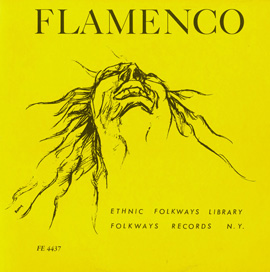
“Flamenco Dance Song”
from Spain: Flamenco Music of Andalusia (1956) | FW04437
“Flamenco Dance Song” from Spain: Flamenco Music of Andalusia
- Begin by giving some background information on the Romani people and Spain.
- The Romani arrived in Spain in the middle of the 15th century.
- They were travelers and didn’t like to stay in the same place for very long.
- Another name for this group of people is Gypsy, but because that name has some negative connotations, the politically correct term is “Romani.”
- The Romani people were not treated well (for more information on their treatment in Spain, research “The Great Roundup” in 1749 of Spanish Romanies)
- Because they traveled so much, they brought music from Africa, the Middle East, and India. When they came to Spain, their music mixed in with Spanish music, and flamenco was born.
- The region most associated with the Romani people and with flamenco is Andalusia in southern Spain (show on a map).

Map of Spain from www.red2000.com/spain/region
- Play “Flamenco Dance Song” and ask students to listen for the different instruments. Fade out after thirty seconds.
- Ask students to identify the instruments they heard. (Voice, guitar, clapping, stomping, castanets.)
- Play the song again, and ask students to clap along with you, keeping a steady eighth note pulse (note: in Spain, the sharp rhythmic clapping part is called palmadas):

- Show students what castanets look like (either with a picture or the actual instrument) and play the castanet rhythm along with the piece (note: palillos is Andalusian for castanets).
- Teach students the technique for playing the castanets (right hand fingers play quick passages, while the left hand keeps the steady pulse).
- In order to teach the quick movements of the right hand, have students practice rolling the fingers of their right hand on their desks or any hard surface, beginning with their pinky and rolling up to their pointer finger and repeating quickly. After the quick rolling motion of the right hand, have them tap their two middle fingers of the left hand (middle and ring fingers) between every finger roll of the right hand to create almost a galloping rhythm. You can find tutorials online for playing castanets if you are unfamiliar with the instrument. Have students play along with the piece of music.
- When students are comfortable with both rhythmic parts, divide the class into sections: have one section do the clapping rhythm while the other plays the castanets, then switch. You may need to modify the castanet part to accommodate the needs of your class. If playing the castanets becomes frustrating for students, work at a slower tempo or assign students just one castanet rather than two.

- Ask students what animal they think might be associated with this type of music—hint: ‘flamenco’ sounds a lot like the English name of a specific bird you might find at the zoo.
- When students correctly identify the animal (flamingo), explain that this type of music is used for a special dance that mimics some of the movements of the flamingo.*
- Show an image or a video of flamingos (there are videos of flamingos dancing in a mating ritual that would work particularly well for this lesson).
- Play the music again and ask students to move their bodies to represent the way flamingos move.
- Show a video clip of someone dancing the flamenco and ask students how the movements remind them of the flamingo. Further the discussion by asking students if their movements were similar to what they saw the dancer doing (note: zarandeo is the term used in Spain to describe the action of moving your hips and shaking your shoulders).
- Point out the clothing of the flamenco dancer. How does the dress remind you of the flamingo? (The color, feather-like ruffles.)
Extension:
- Learn some flamenco dance steps. Invite a guest with training in flamenco to teach the class a few steps, or learn a few steps yourself from an expert to teach your class.
- Have some students dance the flamenco while others accompany them by either clapping or playing the castanets.
Assessment: Students will be able to keep the steady clapping rhythm while listening to the musical selection. They will learn the technique of playing the castanet and work on playing along with the recording. They will experiment with body movements to represent the flamingo and compare those with the movements seen in flamenco.
*The word flamenco can be translated as either “flamingo,” or “Flemish,” associating the dance with either the bird or a particular group of people known for being flamboyant. It is debatable whether the dance is an imitation of the flamingo or the Flemish people as there is evidence for both cases.
Lesson 2: My Donkey Has a Headache!
“Mi Burro” from Children’s Songs from Spain
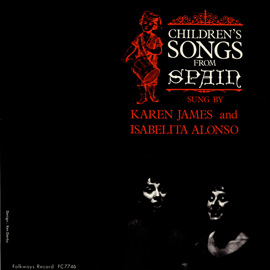
“Mi Burro”
from Children's Songs from Spain (1963) | FW07746
- Prepare pictures so the students can associate the foreign words with images. For the first verse, you will need pictures of: a donkey, a black bonnet, and a pair of lilac-colored shoes (see liner notes for an English translation of the lyrics).
“Mi Burro”

*This transcription is taken directly from the recording, which may be too low for young children to sing. You may want to sing this in a higher key, such as F or G major.
Translation: My donkey, my donkey has got an awful headache.
The doctor has told him to wear a black bonnet.
A little black bonnet?
A little black bonnet.
A pair of lilac shoes, la, la,
A pair of lilac shoes.
- Explain that the children’s song from Spain you will be learning is a playful song about a sick donkey that goes to the doctor. Tell students the word burro means “donkey” in Spanish.
- Sing through the first verse of the song or play the recording while students keep a steady beat. Instruct students to raise their hands when they hear the word “burro.”
- Sing through the first verse of the song again (or play the recording). Instruct the students to keep a steady beat and this time, show pictures that coincide with the words being sung.
- Teach the last phrase of the song to the students, zapatitos lila, la, la, zapatitos lila.
- Explain that zapatitos lila means “a pair of violet shoes.” While singing this part, instruct students to tap their shoes while singing la la la. Play and sing a few more times.
- Teach the first verse of the song by rote (notated above), pointing to the appropriate pictures.
- Have students echo the first verse one phrase at a time while pointing at the pictures, followed by two phrases until they are capable of echoing the first verse of the song in its entirety.
- When students are comfortable singing the first verse of the song, have the students choose gestures to replace the pictures with and sing it again with the added movements.
- Teach the remaining verses at a comfortable pace in the same general rote learning format (probably over several days)—begin by using visuals and then replace them with gestures.
- When students are comfortable singing the whole song, replace some of the gestures with instruments. Allow students to choose an instrument they feel sounds like the donkey’s ailment or treatment (i.e. one student may feel that striking a cow bell represents the donkey’s headache).
- Teach students the xylophone part to accompany the song (notated above).
- Have students play the lowest note of the notated arpeggio (eb) for the xylophone with their left hand, followed by the right (Bb). To play the third note (Eb), cross the left hand over the right.
- In order to help students perform the correct rhythms in the xylophone part, teach them to say mi bu-rro (one syllable for each pitch). When the xylophone plays the repeated fifths as eighth notes, have them say la la la la la.
Extension: Make up a circle or partner dance to teach your students to use with “Mi Burro.”
Assessment: Students will sing “Mi Burro.” They will use gestures to demonstrate what is happening in the song. Students will use instruments to depict what is happening in the song. Students will accompany the song with a simple ostinato pattern on the xylophone.
Lesson 3: Villancicos

Three Kings (photo from Flickr)
“Gatatumba” from Villancicos: Spanish Christmas Songs for Children
“Gatatumba”


“Gatatumba”
from Villancicos: Spanish Christmas Songs for Children (1967) | FW07714
Translation:
Gatatumba, tumba tumba
With timbrels and rattles
Gatatumba, tumba tumba,
Don’t get in the hay
Gatatumba, tumba tumba
Sound the whistle and the rebeck
Gatatumba, tumba tumba
Tambourine and jingle bells
- Begin this lesson by sharing some of the Christmas traditions in Spain (see liner notes in Christmas Songs of Spain):
- Christmas celebration begins on Nochenbuena (Christmas Eve). Many people go to Midnight Mass, where they sing Christmas carols, or villancicos.
- Instead of getting their presents on December 25, children in Spain get presents on January 6, which is Three Kings’ Day (Epiphany). The presents are brought by the Three Kings: Melchar, Gaspar, and Baltazar.
- In Spain, they do not decorate Christmas trees. Instead, they put up elaborate nativity scenes, nacimientos. They even have competitions for these.
- On New Year’s Eve, they believe it is lucky to eat one grape on every stroke of midnight (one grape for each month).
- Ask students to listen for what instruments are being played and play the recording of Gatatumba. Stop after the song is sung one time through (the recording repeats the song three times).
- List instruments the students heard: mandolin, tambourine, castanets...
- The song lyrics list instruments (timbrels, rattles, whistle, rebec, tambourine, and jingle bells), some of which can even be heard in the song. The timbrel and the rebeck (depicted below) are likely instruments the students have never heard about.

Timbrel (photo from Flickr)

“Virgin among Virgins” (1509) by Gerald David shows a Rebec (from Wikipedia)
- Give students copies of the incomplete “Gatatumba” score below. Inform students that all the notes in the song are eighth notes (except for the single quarter note in measure 12 that is indicated). All measures will have four notes except measure twelve and the pickup (indicated).
“Gatatumba”

- Begin with the first phrase of the song (first four bars). Sing the song and have students write in the notes and solfege.
- Give students a few times to hear the first phrase and write in the notes.
- Write the correct notes on the board and have students fix their own answers if need be.
- Work on notating the song phrase by phrase, or move onto teaching the song itself, depending on your overall goal.
- Teach the song by rote. Have students echo each phrase after you, then have them echo two phrases, followed by echoing the whole song. Monitor the students to ensure they are singing the correct word with the correct melody and rhythm.
- When the song is learned, hand tambourines, jingle bells, castanets, and rattles out to the class. Have students play the tambourines, jingle bells, and rattles on the quarter note. For the castanets, follow the rhythm below (repeat pattern for each phrase, or a total of four times).

- When students are comfortable, begin increasing the tempo of the song with each repeat. For this section, you may want to leave out the castanets.
Extension: Teach students to play the melody of “Gatatumba” on the recorder. Make copies of the transcription for the class and work on developing recorder skills. When the piece is learned on the recorder, divide the class up and assign some students to sing the piece, others to play the recorder, and others to play the percussion instruments.
Assessment: Students will listen for the instrumentation in “Gatatumba.” They will sing the song and add instrumentation to it. Students will be able to sing the song and different tempi. Students will notate the first phrase of the piece using their knowledge of solfege. If the lesson extension is used, students will also be able to play “Gatatumba” on the recorder.



